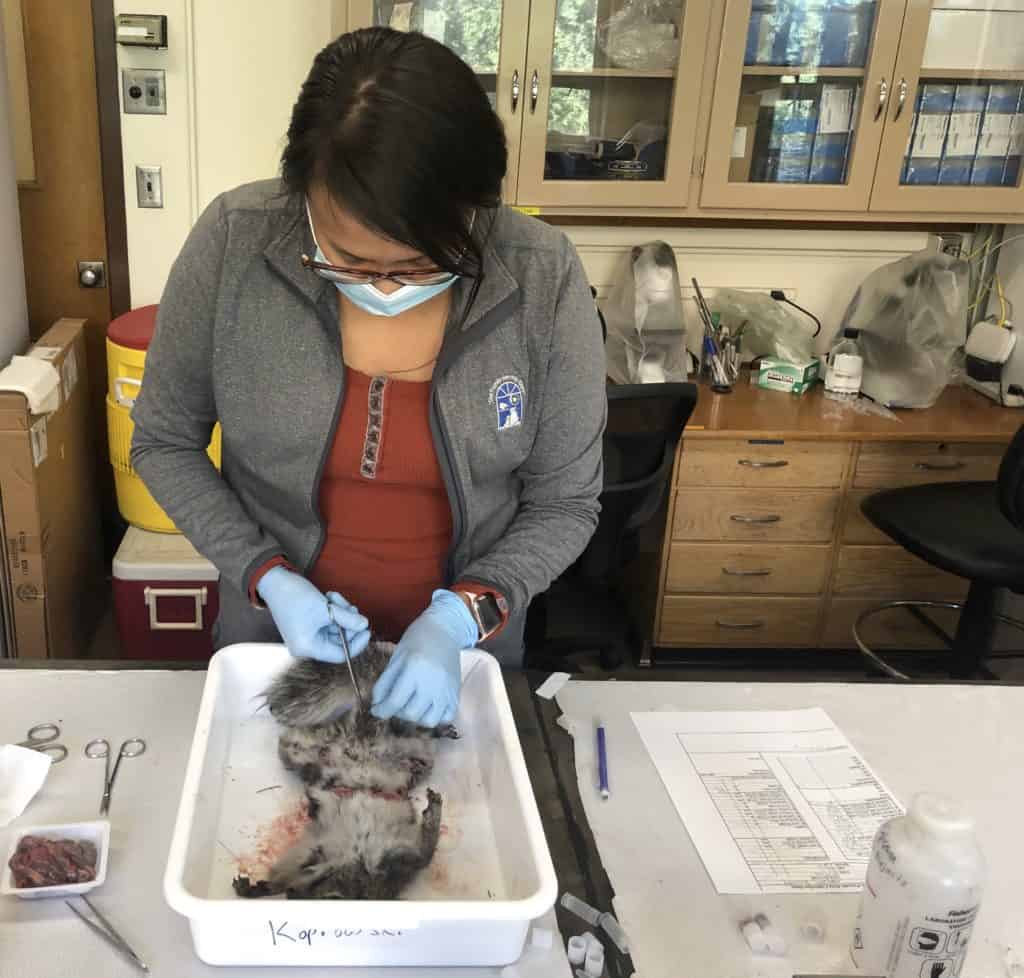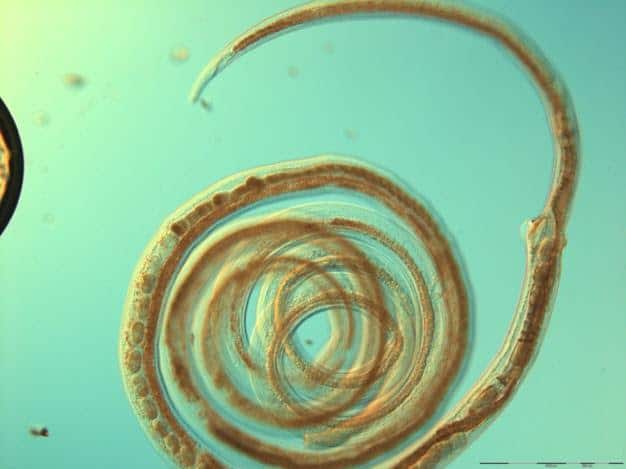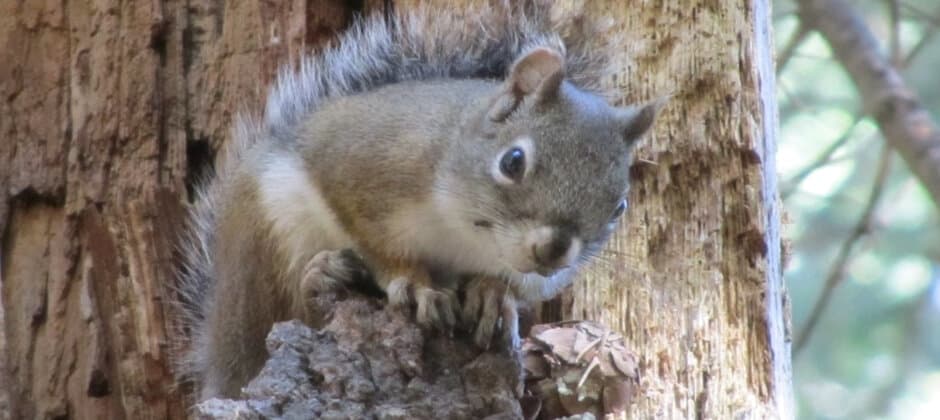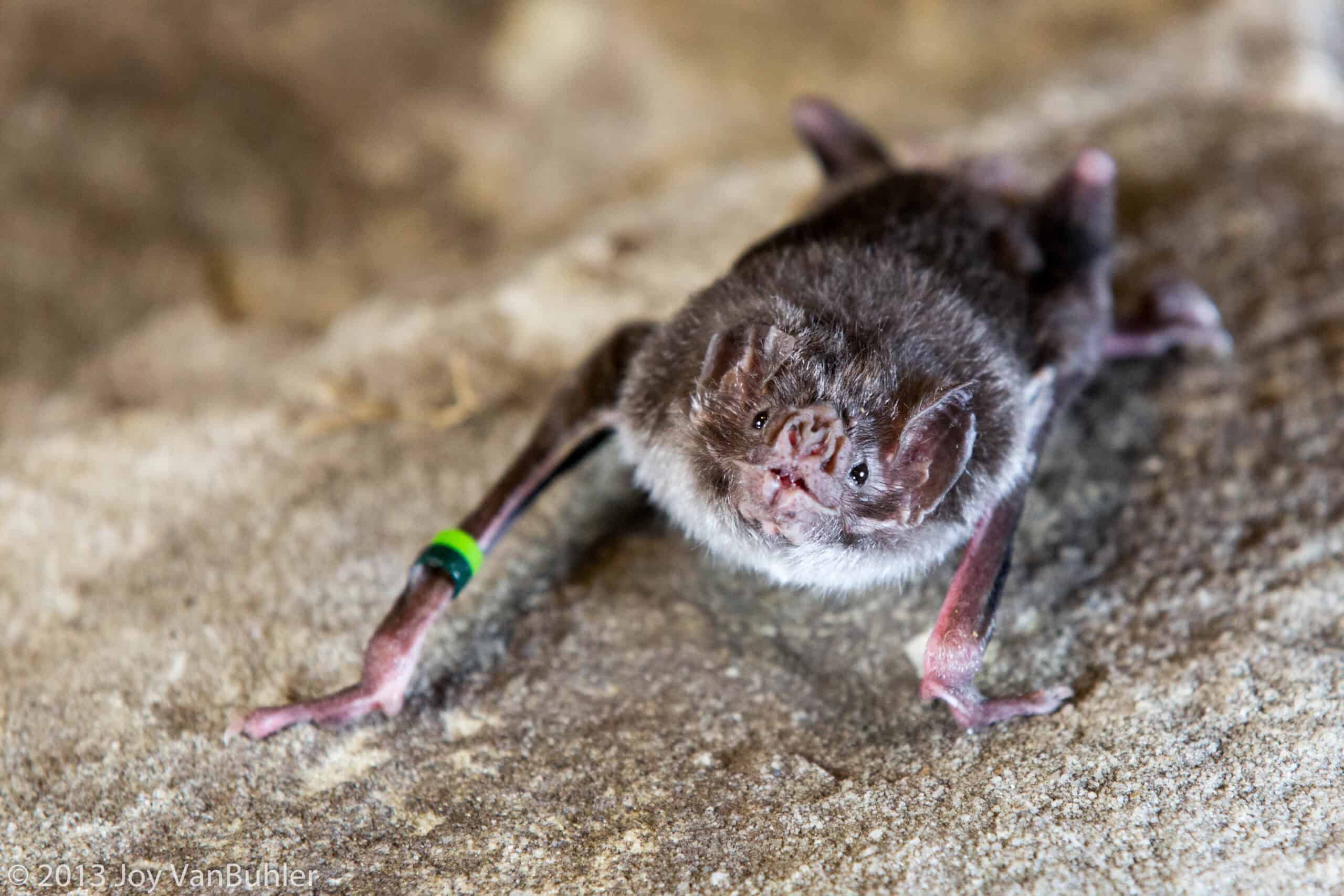Share this article
TWS2020: Parasites may reduce endangered squirrels’ survival
Invasive Abert’s squirrels may be passing harmful parasites to endangered native Mount Graham’s squirrels in Arizona.
Ongoing research on these squirrels and the creatures that live off of them has implications for the management and conservation of the endangered species.
“We’re trying to identify and see what parasites both of these squirrels have,” said TWS member Deandra Jones, a master’s student in wildlife management and conservation at the University of Arizona and member of the Navajo Nation.
Mount Graham’s red squirrels (Tamiasciurus hudsonicus grahamensis) are an endangered subspecies of the red squirrel (Tamiasciurus hudsonicus), which is endemic to the Pinaleño Mountains southeast of Tucson, Ariz. The squirrels suffered huge losses in 2017, when the Frye Fire burned much of the forest ecosystem they relied on in the mountains. Their numbers dropped from an estimated 242 individuals in 2016 to only 33 squirrels right after the fire, according to the Arizona Game and Fish Department. Those numbers have since rebounded to at least 109 individuals, according to a recent survey by the state agency, the Phoenix Zoo and the University of Arizona.

Researcher Deandra Jones dissects an Abert’s squirrel. Credit: Deandra Jones
But the native squirrels face another problem. In the 1940s, the Arizona Game and Fish Department introduced Abert’s squirrels (Sciurus aberti), native originally to the southern Rocky Mountains, to the Pinaleño Mountains for hunting as they thought the native Mount Graham’s squirrels had been extirpated from the region. These non-native squirrels now outcompete the native Mount Graham’s in the area.
In Jones’ ongoing research, presented on a poster at The Wildlife Society’s virtual 2020 Annual Conference, she is seeking to discover whether the newcomers are also passing on parasites to the vulnerable population of Mount Graham’s squirrels and whether these may negatively impact the health and survival of the population.
Jones and her colleagues have been conducting necropsies on both species of squirrels to determine what types of critters live in their gastrointestinal tracts. So far, they’ve analyzed about 100 Abert’s squirrels, brought to them by the state wildlife agency as part of an ongoing eradication program in the area, and 23 native Mount Graham’s squirrels that died either as a result of roadkill, predators or other reasons.
So far, Jones said that the Abert’s squirrels have much higher proportions of parasites than the native squirrels. More than 60% of the introduced species they studied carried endoparasites, while only 38% of the Mount Graham’s red squirrels had the gut parasites.

A female nematode found in squirrels, with eggs visible inside. Credit: Deandra Jones
The researchers haven’t yet determined which species of worms are infecting the squirrels, and they are planning on conducting future studies to look at ectoparasites, or those that feed on the outside of the animals’ bodies like ticks or fleas.
Other factors like insect outbreaks also affect Mount Graham’s squirrels, but learning more about the parasites that Abert’s squirrels may pass along to their endangered cousins is important for building effective conservation plans.
Meanwhile, another poster presented by Hejie Xu from the University of Arizona at the TWS conference this year shows how she and colleagues intend on researching the ways that traffic and vehicles might affect Mount Graham’s red squirrels.
This research was presented at TWS’ 2020 Virtual Conference. Conference attendees can continue to visit the virtual conference and review Jones’ paper for six months following the live event. Click here to learn about how to take part in upcoming conferences.
Header Image: Mount Graham’s red squirrels only live in the Pinaleño Mountains of Arizona. Credit: Marit Alanen/USFWS








